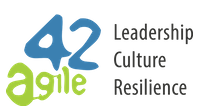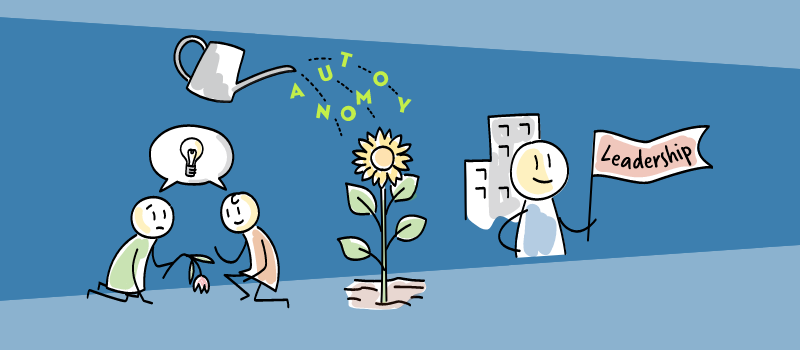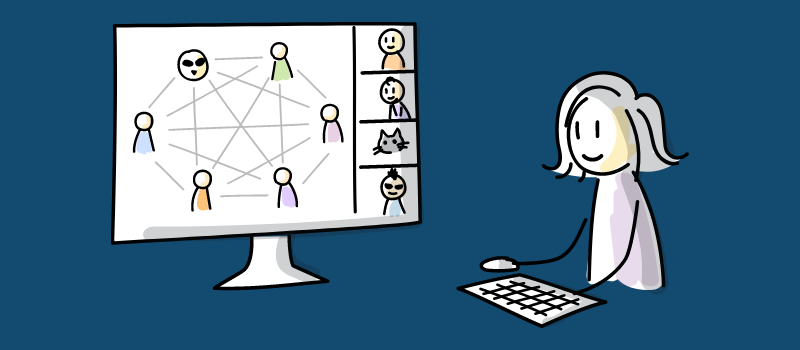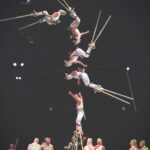Archetypes for change – Leadership coaching in complex times
/by Andrea TomasiniI wrote an article (08/2020) for the Coaching-Magazin Online about "Archetypes for change - Leadership coaching in complex times" and I'm happy to share the content with you here on our blog. The different archetypes are part of our ORGANIC Leadership® framework which we support organizations with.
Archetypes tie together in an intuitive and powerful way a diverse range of concepts that affect leaders and organizations. This article examines the concept of leader and organizational archetypes. Starting from the root of archetype in myth and narrative and combining this theoretical literature with leadership theories and psychological literature on behavior, it discusses the coaching of leaders through the process of changing themselves and their organizations by understanding their relationship to certain archetypes and the effects of their behavior.
If you want to read the story online, you can do so from Coaching-Magazin Online's webpage.
Introduction: what is an archetype?
Archetypes are part of stories: they represent structures or character types that stand for, or even represent, collective ideas, ideals, characteristics, fears, and desires. Some archetypes are almost universally recognizable, such as the self-sacrificing hero, or the loving mother, while others are more culturally specific. It is important to note that archetypes are not stereotypes (Snowden, 2005). People or situations are not shoehorned into them and they are not used for categorization. They just emerge out of repeated collective representations in stories, and we might recognize them when we see them. They also continue evolving as stories are retold or new ones are added into the canon. Because that makes them essentially pattern abstractions with a personality, archetypes can be incredibly flexible and practical: they are instantly recognizable, but rooted in different specificities.
The roots of archetypes go back to ancient Greek philosophy and Plato, who envisioned a world of ‘ideas’, ideal types whose specific reflections make up the real world. They were then picked up in Renaissance philosophy. In the 20th century, the psychoanalysis pioneer Jung gave them clearer shape and much of their modern understanding, identifying archetypes with prototypical images of the world that we all carry around with us, and which are so inherently bound to us that they keep surfacing again and again in our stories. These days, archetypes often feature in narrative research and literary criticism, informing approaches that seek to take a big-picture, comparative view of the word (Campbell, 1968; Frye, 2001).
What do archetypes have to do with coaching, leadership, and organizations?
It is clear then how archetypes might be relevant in approaching a book or film, but what do they have to do with coaching leaders? In fact, there are two major connecting points: one has to do with stories themselves, and the other with the kind of understandings and representations that archetypes can support in an organization.
Narrative has of course become a dominant theme in organizational coaching in recent years, with leaders often encouraged to take courses in storytelling (see, for example, Choy, 2020 or Denning, 2005). In fact, narrative goes far deeper than that. The unstructured, natural stories that are told every day around the coffee machine, the stories of success and failure that circulate and justify organizational practices and choices, the elaborate mythology and grand narratives that make up and support organizational values, all these are part of what constitutes the all-important organizational culture (see, for example, Ravasi & Schultz, 2006 or Gabriel, 2004). And archetypes, once we start looking, are one of the elements that crosscut across different levels and connect them, appearing in different forms in all kinds of stories.
By seeing and understanding those archetypes, a point of access in organizational culture in all of its complexity becomes available, which means that we can start affecting it. Archetypes bring together different elements in a natural way. Those studying the art and science of organizations know that the attitudes of leaders in an organization, the underlying culture and structure, and the response of others to those behaviors are connected: directly, indirectly, and sometimes in ways that we cannot immediately see. Understanding archetypes means that these connections are built into our perceptions and interventions without reducing the complexity of both organizations and leadership.
Complexity theories of leadership
Mentioning this embeddedness of leadership in partly visible and partly understood networks leads us to necessarily discuss a complex approach to leadership in general. Leadership theories can help us understand what archetypes contain. Given the characteristics of archetypes and the way they are used in coaching (to be more specifically addressed in the next section) it makes sense to turn to complexity theories in particular (Uhl-Bien et al., 2007). Complexity leadership theories were developed as a response to the changing world of work, from a more structured and mechanical to a rapid-based, adaptive one that is primarily built on human knowledge, relations, and capacities. This modern world of work moreover operates in dangerous, constantly shifting markets, sped up even more by technology. Complexity leadership draws from complexity science, which focuses on large, dynamic systems of interconnected components that evolve over time and are in a constant state of change, even without external inputs. In organizations, those components include people and their networks, which brings complexity to a whole other level.
Leadership for an evolving dynamic system should be evolving and dynamic itself or fall behind and desperately try to maintain control of the uncontrollable. In this environment, flexible leadership (now meant as a quality and a dynamic, and not as a position of power or a job description) can create the right conditions to enable responsive evolution, and therefore resilience, and trigger the evolutionary potential of the system without directing it, focusing on speed and learning over efficiency and process control. In order to achieve that, a high degree of well-connected autonomy will be necessary.
Because coaching a dynamic is generally rather difficult, in this article reference will often be made to leaders themselves, with the understanding that they are especially well-placed to influence how leadership is exercised. The rest of this article will focus on how coaches can facilitate through archetypes the emergence of coherent autonomy in a context that enables evolution.
Complex-friendly movement through change and coaching for awareness
So how do coaches put that to good use in the process of organizational change, and what does it mean for coaching leaders through it? There are processes for extracting the archetypes that are present in different parts or groups of an organization (see for example Snowden, 2005): contrasting those reveals unarticulated, sometimes critical, variations in perspective. Here, however, we will propose using a series of pre-existing, high-abstraction organizational archetypes that can then be given specific form into the context of application. These high-level archetypes bring together leadership attitudes, organizational expectations, and culture, as well as levels or types of structure and autonomy present in the organization.
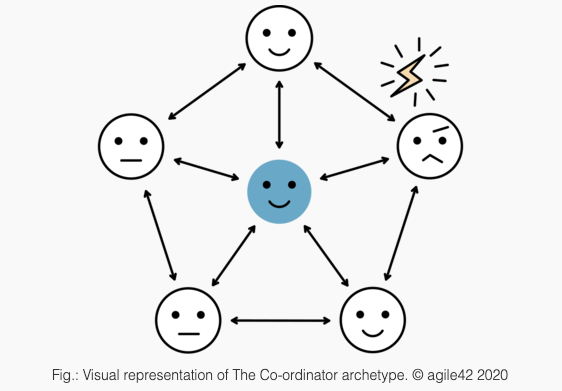
The last point is critical, because the range of autonomy levels represented in archetypes makes them an ideal transition tool. The proposed archetypes start from The Expert, characterized by a leader who is the primary decision-maker and communicator with the team. Relationships are one-to-one with the leader and the culture is focused on control. All five high-level archetypes proposed will not be outlined here, but they move in increasing levels of autonomy from The Expert, through The Co-ordinator and The Peer (includes collective decision-making, solid feedback loops, increased responsibility for personal action and a collaborative culture). Finally, at the higher levels of autonomy there are The Coach and The Strategist archetypes, where ultimately leadership is distributed instead of concentrated on the person of the leader, in true complexity fashion, and the leader as a person acts as a strategic conduit between the team and the organization.
Identifying relevant archetypes and using them to better understand autonomy
So how does a leader, a team, or an organization know which archetype they can identify themselves with, and use that knowledge to intervene and gradually increase the level of autonomy, and therefore adaptability and speed of reaction, in the organization? As a coach, the process can start with facilitation: in a workshop, people from diverse perspectives share stories of success and failure in the organization and then map those on to archetypes. This shows the coach, not only which archetypes are more typical of the organization, but also which ones people feel more comfortable with and which they consider more effective. Comfort levels are something to take into account in leadership coaching, because pushing premature change will only get rejected and lead to conflict.
Using the most common and successful archetypes as a guide, leaders can start seeing a possible evolutionary path, from the existing conditions to greater autonomy and interconnection within and between teams. The path however is not to the archetype representing the highest possible level of autonomy: it is to the next most autonomous archetype from the one the team is at right now, whatever that is. This is where leadership coaching becomes most crucial, because the key to triggering change are leadership behaviors.
For the practicalities of coaching, leadership behaviors can also be distilled down to six major categories, which of course subsume a whole range of actual actions. These behaviors exist simultaneously in various dimensions, from the perspective of the leader, to the perspective of the team, to ideas of how work gets done and what constitutes success. These overarching behaviors can be described with words like directing, demanding, conducting, or catalyzing. Behaviors and archetypes are mutually reinforcing and feed off culture: a leader’s behavior shapes the culture and archetype, while at the same time being affected by it.
Coaching leadership through behavior and contextual awareness
From a coaching perspective then, the first step would be coaching on Emotional Intelligence (Beldoch, 1964; Goleman, 1995), observation and awareness. Beyond the debate on the general validity of Emotional Intelligence as a concept, it is used here as a tool that can be particularly helpful in making connections: the leader can observe the way their own emotions trigger their actions which in turn shape the impact they have, so that they realize this chain for themselves and, through practices such as journaling or regular coaching and reflection sessions, build the capacities for observation.
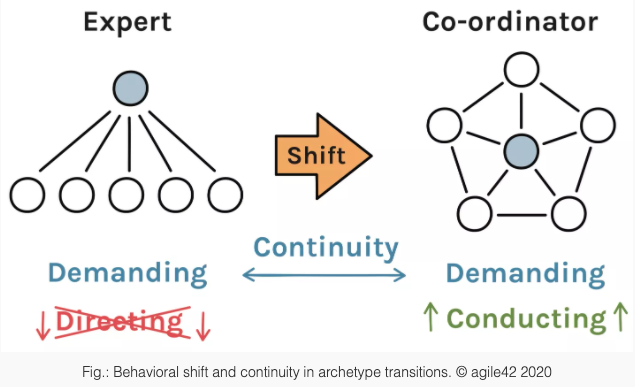
With awareness heightened, conscious behavioral change can be possible. Going back to the evolutionary path that archetypes have helped us recognize, coaches can associate the present and the desired archetypes with specific behaviors (which are already part of an archetype’s constellation). Each archetype involves multiple different behaviors and these partially overlap between different archetypes, so for the leader the key is to start adopting some of the new behaviors of the desired archetypes, while maintaining those among the old ones that are still present in the goal archetype. This continuity is an important element for change to be accepted and happen naturally. So, for example, if an organization or group is trying to move from The Expert to The Co-ordinator archetype, a leader might still use demanding-type behaviors, but they will no longer be dictating every detail, and will instead move to a higher-level co-ordination. As the leaders’ behavior changes, the structures around it will start shifting as well, as people and structures around them respond to the changed leadership behavior and new rituals and practices (that can be reinforced to support the change) emerge. The key here is that instead of forcing organizational structure to change in appearance only, the leader uses this heightened awareness and sense of direction to change their own actions and practices, and magnify that impact.
The letting go of control and its rewards
This process sounds theoretical, but in its application on the ground it has the advantage of making the abstract immediately specific and graspable by honoring existing knowledge through the intuitive connections embedded in the idea of archetypes. This means that the leader isn’t being aggressively guided to unravel everything and break it down into constituent parts in order to make a difference, but they are being given a way of seeing things that offers power and understanding over their own actions.
The implication here is that the leaders’ control primarily extends to themselves and what they do, as well as what they are able to observe, which sometimes might be hard to accept. It means that leaders will have to recognize that deliberate changes in organizational structures, or stating ideal company values might have very little effect. They will have to recognize that their control over others’ actions (except in the most direct and damaging way) is very minimal. The coach can encourage that process by emphasizing why it is worth it for creating the kind of impact most leaders dream of having on their organization through the cumulative power of small interventions. So what they can do is take action themselves, encouraging the direction they have chosen, as the archetype of their organization changes more smoothly around them, alongside the stories people tell.
Literature
Beldoch, Michael (1964). Sensitivity to expression of emotional meaning in three modes of communication. In Joel R. Davitz et al. (eds.), The Communication of Emotional Meaning (pp. 31–42), New York: McGraw-Hill.
Campbell, Joseph (1968). The hero with a thousand faces. Princeton: Princeton University Press.
Choy, Esther (2020). What Is Leadership Storytelling, Anyway?. [online] Forbes. Available at: https://www.forbes.com/sites/estherchoy/2020/01/26/what-is-leadership-storytelling/#313d19f07b17 [Accessed 23 July 2020].
Denning, Stephen (2005). The Leader’s Guide to Storytelling: Mastering the Art and Discipline of Business Narrative. San Francisco: John Wiley & Sons.
Frye, Northrop. (2001). The archetypes of literature. In Vincent Leitch (ed.), The Norton Anthology: Theory and Criticism. New York: Norton.
Gabriel, Yiannis (ed.) (2004). Myths, Stories and Organizations: Premodern narratives for our times. Oxford: Oxford University Press.
Lavine, Marc (2014). Paradoxical Leadership and the Competing Values Framework. The Journal of Applied Behavioral Science, 50(2), pp.189–205. https://doi.org/10.1177/0021886314522510.
Goleman, Daniel (1995). Emotional intelligence. New York: Bantam Books.
Jung, C. G& Franz, Marie-Luise von (1964). Man and his symbols. New York: Dell Pub. Co.
Ravasi, Davide & Schultz, Majken (2006). Responding to Organizational Identity Threats: Exploring the Role of Organizational Culture. AMJ, vol. 49, pp. 433–458, https://doi.org/10.5465/amj.2006.21794663.
Snowden, David (2005). Stories from the Frontier. E:CO, 7(3–4), pp. 155–165.
Snowden, David (2002). Narrative Patterns: Uses of Story in the Third Age of Knowledge Management. Journal of Information & Knowledge Management, 1(1), pp. 1–6.
Tong, Yew Kwan & Arvey, Richard D. (2015). Managing complexity via the Competing Values Framework, Journal of Management Development, 34(6), pp. 653–673.
Uhl-Bien, Mary; Russ, Marion & McKelvey, Bill (2007). Complexity Leadership Theory: Shifting leadership from the industrial age to the knowledge era. The Leadership Quarterly, 18(4), pp. 298–318. https://doi.org/10.1016/j.leaqua.2007.04.002.
Author
-

I am an Agile Coach and Trainer and I am helping customers all around the world to become more Agile. I am more and more keen on adopting adaptive emergent approaches to improve people's quality of life. Through an holistic and pragmatic approach - I consider Lean and Agile very powerful frameworks - it is possible to improve results, performance and also personal satisfaction.
View all posts
